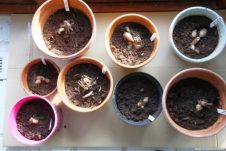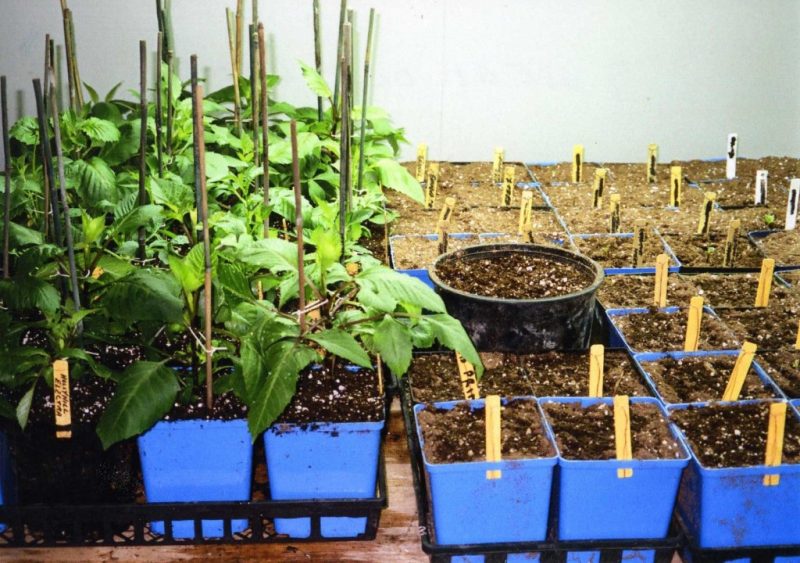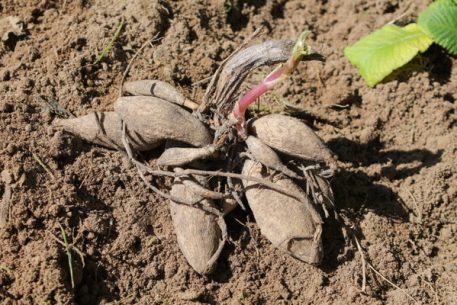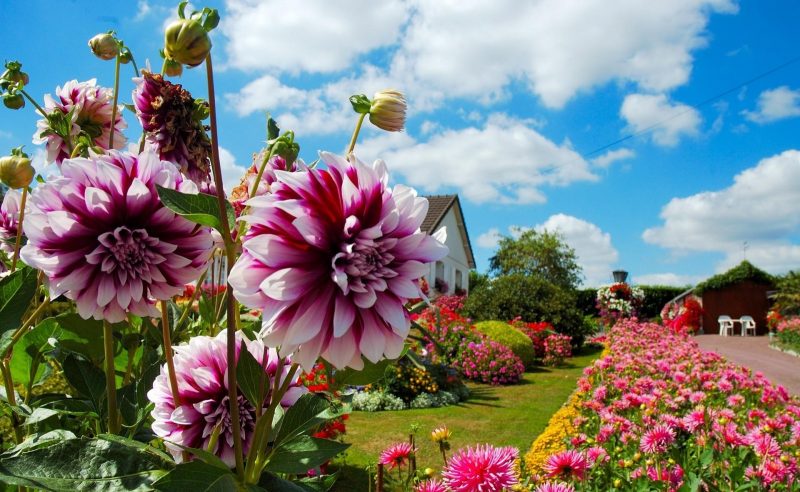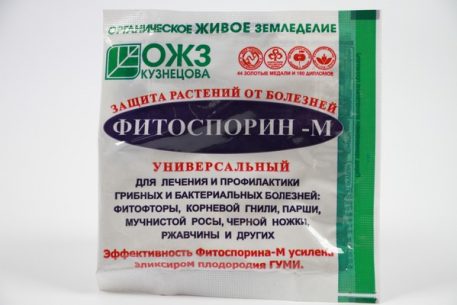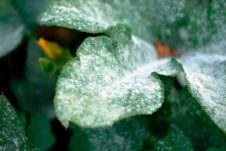There are more than 15 thousand varieties of dahlias. Among them there are plants with huge flowers more than 30 cm in diameter and miniature - up to 10 cm. But they are all heat-loving and require special care. Planting dahlias with tubers in the spring is a laborious and responsible business, the success of which depends on the experience and knowledge of the gardener.
Material Content:
Features of spring planting dahlias tubers
The first time for planting dahlias can be taken in the garden center. Planting material is carefully selected. Nodules should be attached to the root neck, because the buds grow only on it. It is important to know how to save your own dahlias until spring, so the preparation of planting material for next year begins in the fall.
Perennial dahlias, whose homeland is South America, do not winter in the middle zone of Russia. To preserve the plants for the next year, they dig up them every autumn, and plant in the spring again.
It is important not only to dig and preserve the dahlia tubers in time, but also to properly prepare for the spring planting.
Once in a cool cellar in a warm room, they quickly sprout.
Tubers can not be germinated before planting, but then flowering can be obtained only at the end of August or in September - 2 months later than from prepared planting material.
Preparation of planting material and soil
A plot for growing dahlias for next year is being prepared in the fall - they bring in rotted organic matter and dig it up.It is important to consider not only the structure and fertility of the soil, but also its acidity. Flowers like a neutral substrate, but if the environment is acidic or alkaline, they will not be able to reveal all their wonderful qualities. In the spring, the site is leveled, and holes are made.
Preparation of dahlia tubers for planting consists of their spring inspection, culling poorly preserved and germinating the remaining.
Throw out all the nodules that have broken off from the root neck: they will not sprout. Spoiled places during storage are cut with a sharp blade, slices are treated with brilliant green.
Germination of tubers in a special container
For germination, dahlias are taken out of the storehouse not earlier than the end of April - 2 or 3 weeks before planting in open ground. Once in the heat and light, the tubers begin to sprout very quickly, over a longer period the sprouts will outgrow and will be weak.
It is not necessary to take good soil for germinating dahlias. Sawdust, coconut substrate, sand will do. There is enough nutritional supply in the nodules themselves in order for the growth of shoots to begin. Planting in pots with drainage holes will save plants from waterlogging.
Having examined the tubers, they are put for germination in a warm, bright place. Sand or sawdust is poured into each container, the dahlia tuber is placed with its root neck up (it should be above the level of the substrate).
If there is a desire to propagate a rare variety by cuttings, tubers can be brought out for germination in March. Grown dahlia sprouts are cut with a sharp blade along with a heel and root separately, and more buds wake up on the tuber and shoots grow.
The sequence of actions for obtaining seedlings by cuttings:
- cut shoots are stuck in a moist substrate;
- cover them with cans, bags or plastic bottles to root;
- places of slices on tubers are treated with brilliant green.
To obtain cuttings, old tubers are used, unsuitable for planting. This additional method allows you to quickly propagate the desired variety and get a lot of seedlings for decoration of the flowerbed.
Planting dahlias tubers in spring in the open ground
In central Russia, dahlias can be planted in open ground no earlier than mid-May, because they are afraid of temperatures below 0 °. Prepared tubers are planted in a sunny place with fertile soil.
You can add compost or humus to the hole, dahlias grow well on nitrogen-enriched, loose soils.
The scheme of planting flowers depends on the variety of dahlias. The distance between the holes is from 50 cm to 1 meter, depending on the expected size of the bush. The depth of the hole is one bayonet of a shovel, if the rhizome is large, a little deeper (up to 40 cm). The lower part of the sprouts should be sprinkled with earth a few centimeters. Planted dahlias are watered and mulched.
Aftercare for flowers
Flower care includes regular watering, weeding, dressing, protection from pests and diseases. Tall and medium-sized varieties must be tied up and formed. To do this, cut the tops of seedlings about 50 cm high or pinch (over 4 or 6 leaves).
If the dahlia is allowed to grow without pruning, then soon a bud will begin to form at the top of the shoot. It will delay the growth of the remaining peduncles that may appear in the plant. After removal of the upper growth point from each leaf sinus, lateral shoots will begin to develop. Experienced gardeners advised to cut the lateral processes emerging from the first two leaves so that the bush does not grow too large and begins to bloom faster. In summer, faded inflorescences are necessarily removed so that the plants are not depleted.
Features of the application of fertilizers and growth stimulants:
- For spring feeding dahlias do not use nitrogen fertilizers. Manure and humus are brought to the site where dahlias grow in the fall, after they dig up the tubers. Then the plants will receive nitrogen in early spring - immediately after planting.
- Before the budding phase, when it rains heavily, Kornevin is used to stimulate root growth. This will save the root system of the plant in adverse conditions of high humidity.
- In early June, flowers need potash and phosphorus fertilizers. They will help form buds, better flowering and prepare tubers for winter.
Dahlias are not afraid of frosts to -5 ° C. They dig them out for storage in October, when the aboveground part is completely dry. Until the moment of digging, the dried stems are not cut, otherwise the kidneys will wake up. It is better to remove tubers from the ground with a pitchfork so as not to damage. It is better to do this in dry weather.
Dug up tubers are dried before storing. The stem is cut to a height of 10 cm, gently clean the ground with tubers. All sick and broken parts of the rhizome are cut with sharp scissors. For reproduction next year, dahlias are divided, leaving a piece of root neck on each cut plot.
It is advisable to treat the tubers with a solution of fungicide, potassium permanganate or sprinkle with sulfur before laying it for storage.
It is convenient to store them in cardboard boxes, sprinkled with large sawdust. Boxes are closed and left until spring in a pantry, insulated, dry garage or cellar with an air temperature of plus 3–10 ° C.
You can save dahlias in the winter in paraffin. To do this, peeled and dried tubers are dipped in melted paraffin, stored in a basement or in a dry, cool room. The advantages of this method are that dahlias do not dry out and do not wake up early. In the spring, before planting, the tubers are sprouted, first cleaning off the paraffin film.
Pest and Disease Control
The causes of dahlia diseases are various factors - viruses, fungi, malnutrition, improper care, and insect pests.
Sometimes on the bushes the leaf blades look wrinkled, covered with spots. Leaf spotting causes chlorosis, which manifests itself from a lack of some nutrients. To correct the situation, top dressing, checking and adjusting the acidity of the soil will help.
Yellow spots during chlorosis are located along leaf veins. If they are scattered randomly across the sheet, this is a mosaic virus.
The plants infected with the virus need to be dug up and destroyed so that the disease is not transmitted to healthy dahlias with insects or garden tools. Preparations for viral diseases in plants have not yet been developed.
Fungal Dahlia Diseases:
- A thickened fit and a shaded area provokes the appearance of gray rot. First, a gray coating appears on the leaves, then it spreads to all parts of the plant. Flower stalks are bent, and buds do not open. The infection persists in the tubers, may resume next year.
- If the dahlia's buds wither, the tops droop, it is covered with a pink and white bloom - this is fusarium. When digging, such tubers wrinkle, are poorly stored.
- Another disease of dahlias is powdery mildew. A white powdery coating appears on the stem and leaves, which then turns gray. With a severe defeat, the leaves curl, the buds fall, growth stops.
To combat fungal diseases, fungicides are used (Fitosporin, Fundazol and others). Heavily affected specimens are destroyed.
Flowers are also threatened by insect pests - aphids, nematodes, bugs, caterpillars, cabbage scoops, whiteflies, thrips. Insecticides are used against them.
All the efforts to grow and care for dahlias are justified by the wonderful summer flowering. Experience and hard work will help create a flower paradise of dahlias on the site.




